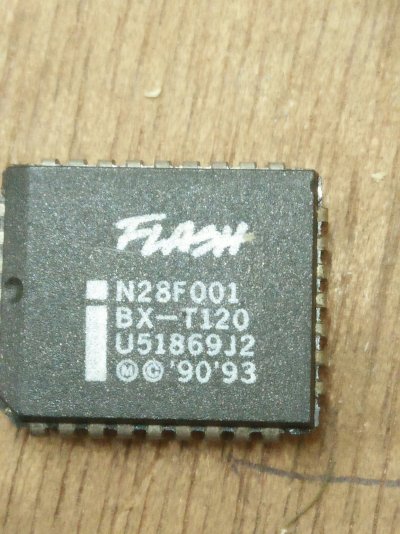const int addrPins[] = {2, 3, 4, 5, 6, 7, 8, 9, 10, 11, 12, 13, A0, A1, A2, A3, A4}; // Adjust pins as needed, connect to pins A0-A16
const int dataPins[] = {A5, A6, A7, 22, 23, 24, 25, 26}; // Adjust pins as needed, connect to pins DQ0-DQ7
const int CE = 27; // Chip Enable pin
const int OE = 28; // Output Enable pin
const int WE = 29; // Write Enable pin
void setup() {
for (int i = 0; i < 17; i++) {
pinMode(addrPins[i], OUTPUT);
}
for (int i = 0; i < 8; i++) {
pinMode(dataPins[i], OUTPUT);
}
pinMode(CE, OUTPUT);
pinMode(OE, OUTPUT);
pinMode(WE, OUTPUT);
digitalWrite(CE, HIGH); // Disable chip initially
digitalWrite(OE, HIGH);
digitalWrite(WE, HIGH);
}
void writeByte(unsigned long address, byte data) {
setAddress(address);
setData(data);
digitalWrite(CE, LOW); // Enable chip
digitalWrite(WE, LOW); // Begin write cycle
delayMicroseconds(1); // Ensure timing requirements are met
digitalWrite(WE, HIGH); // End write cycle
digitalWrite(CE, HIGH); // Disable chip
}
void setAddress(unsigned long address) {
for (int i = 0; i < 17; i++) {
digitalWrite(addrPins[i], (address >> i) & 0x01);
}
}
void setData(byte data) {
for (int i = 0; i < 8; i++) {
pinMode(dataPins[i], OUTPUT); // Set pins to output mode
digitalWrite(dataPins[i], (data >> i) & 0x01);
}
}
void loop() {
writeByte(0x00000, 0xAA); // Write data to address 0x00000
// Add additional write operations as needed
}


